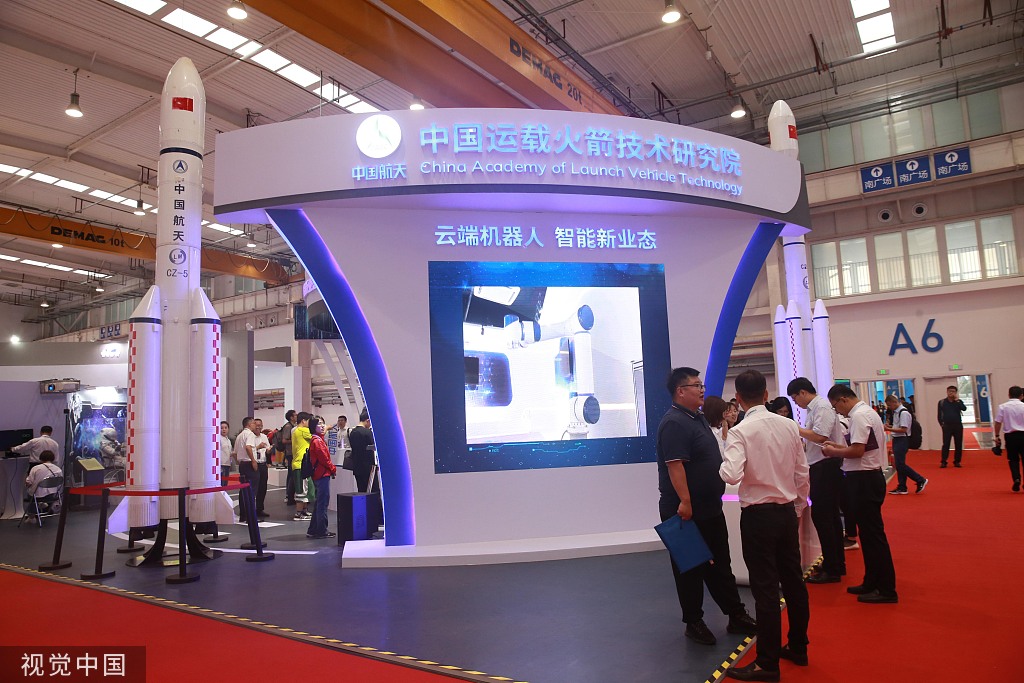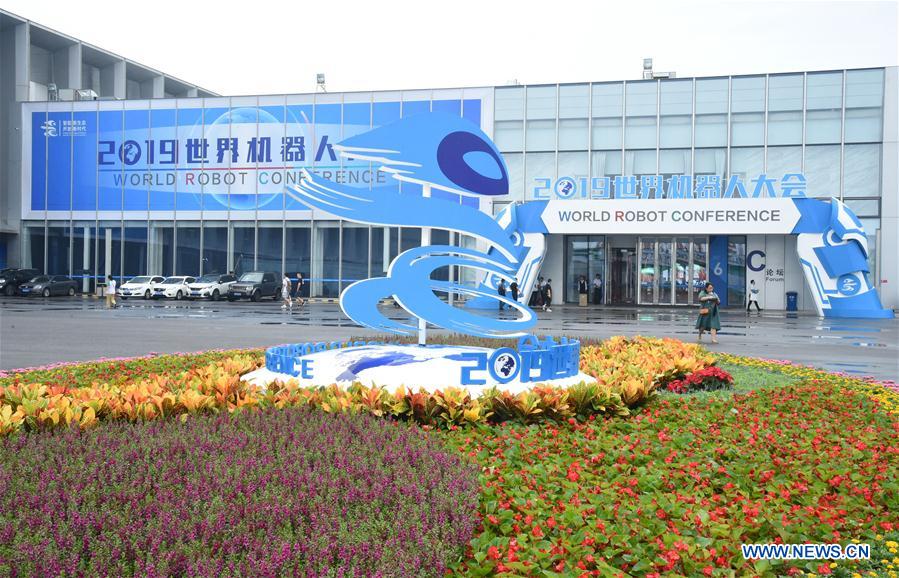Space tech-based robots find wider application on Earth
 0 Comment(s)
0 Comment(s) Print
Print E-mail Xinhua, August 23, 2019
E-mail Xinhua, August 23, 2019

A novel patrol and security robot, a dog-like robot that can perform tasks in complex and harsh environments, intelligent searching and environment perception robotic systems.... these robots shown at the ongoing 2019 World Robot Conference have one thing in common: they have benefited from China's space technology.
These robots were developed by the China Academy of Launch Vehicle Technology (CALT), one of the country's key developers of carrier rockets.
In recent years, China has achieved breakthroughs in space technology, and stepped up efforts to develop crucial robotics technologies.
Wang Yanbo, a project manager from CALT, said that the academy is trying to transfer advanced space technology into more products that can make a difference to people's daily lives.
"The highly sophisticated and systematic space technology might help improve robot design and intelligent systems," Wang said.
Based on the robotic arms used in space missions, CALT has developed several collaborative robotic arms for industrial use.
Wang said the robotic arms can quickly learn from the instruction of an operator and grab things with the precision of 0.1 mm.
Besides those robots used on assembly lines, the autonomous patrol robot developed by CALT has been applied in some neighbourhoods in Beijing and industrial parks in Chongqing.
Equipped with a 360-degree camera, the robot can walk flexibly on the ground and automatically avoid obstacles in a prescribed area. Once it detects dangerous situations such as fire hazards or anomalous behavior, it will sound the alarm and report to the control system.

"We have borrowed the high-precision navigation technology and infrared detection system used in rocket design," said Wu Xin, one of the researchers.
The bionic robots including a dog-shaped robot and snake-shaped robot are special-purpose robots which can be used in disaster relief or maintenance work in hard-to-reach areas.
"We have designed mechanical parts that can work in the harsh space environment, which has extreme low temperatures and a large amount of radiation, offering inspiration for designing robots that can work in harsh environments here on Earth," said Li Qiang, a technologist of the bionic robots.
Inspired by the tracking system used to position and collect rocket debris, researchers from CALT have designed an intelligent searching system that can be used in scenarios such as disaster rescue and equipment inspection, said Zhang Xing, a developer of the system.
The system combines a searching drone and processing software that use advanced algorithms such as computer vision algorithms and 3D model reconstruction algorithms. It can lead the drone to track objects less than one meter in diameter at an altitude of 800 meters, Zhang said.
Based on a complicated rocket controlling system and its strong data processing ability, CALT also developed a cloud platform that can act as the "general director" for the management of a team of robots.
The cloud platform gathers operating data of multiple robots and analyzes the data in real time, allowing users to monitor the robots and quickly spot malfunctions through an app.
In the future, the cloud platform will be equipped with a 5G communication module. The high speed and low latency of 5G will allow users to manage robots with more efficiency, said Li Xiang, a technologist from CALT.






Go to Forum >>0 Comment(s)